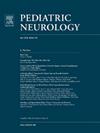Glycosylphosphatidylinositol Biosynthesis Defect Due To Novel Biallelic Pathogenic Variants in PIGW
IF 3.2
3区 医学
Q2 CLINICAL NEUROLOGY
引用次数: 0
Abstract
Background
Inherited glycosylphosphatidylinositol (GPI) deficiencies are a heterogeneous group of inherited disorders of glycosylation, caused by mutations in genes involved in GPI-anchored proteins (GPI-AP) biosynthesis. PIGW is a gene known to be involved in the early steps of the GPI-anchor biosynthesis, as well as functional studies for most patients. Biallelic mutations in PIGW have been previously linked to hyperphosphatasia with mental retardation syndrome 5, also known as glycosylphosphatidylinositol biosynthesis defect 11 (GPIBD11).
Methods
We report seven individuals, including two fetuses from six unrelated families. Whole exome sequencing and chromosome analysis were performed, with variant interpretation based on ACMG and AMP guidelines. Magnetic resonance imaging (MRI) was also conducted on some of the patients. Blood samples were collected from patients to analyze GPI-AP expression using flow cytometry on markers like CD16, CD24, and FLAER. Functional analyses were performed using PIGW KO HEK 293 cells generated with CRISPR/Cas9 technology. The cells were transfected with rat Pigw cDNA that contained patient variants. The restoration of GPI-AP expression was measured by flow cytometry. Western blotting was used to assess protein expression.
Results
Affected patients exhibited a wide range of clinical features. Some patients presented classic GPIBD11 symptoms like developmental delay, hyperphosphatasia, and intellectual disability. Other patients showed atypical or milder phenotypes. The magnetic resonance imaging scans revealed variable neurological abnormalities in the affected individuals. Whole exome sequencing results identified PIGW mutations in all patients, which confirms the genetic basis of the disorder. Flow cytometry analysis of blood samples from patients P1, P4, and P5 using various markers showed a significant reduction in GPI-AP expression. The CD16 marker decreased to 1.8% in P1 and 21% in P5 compared to controls. CD24 was reduced to 22% in P1 granulocytes. Also, a minor decrease in CD14 on monocytes was observed in P4, as well as a slight reduction in the expression of FLAER in lymphocytes. Functional studies on PIGW-deficient CHO cells and HEK293 cells, using flow cytometry, showed that GPI-AP expression is affected by the PIGW variants. Western blotting showed reduced PIGW protein expression, except for P153L and R36G, which were similar to wild-type levels.
Conclusions
To date, six patients and two fetuses with biallelic variants in PIGW have been reported. Here, we describe five new patients and two fetuses harboring homozygous or compound heterozygous variants in the PIGW gene. Our results illustrate the clinical variability of GPIBD11, highlighting the importance of broad genomic sequencing assays for patients who do not show typical symptoms. Therefore, our study expands the clinical and molecular spectrum of PIGW-associated disorder.
PIGW中新型双等位致病变异导致的糖基磷脂酰肌醇生物合成缺陷
背景遗传性糖基磷脂酰肌醇(GPI)缺乏症是由参与GPI-锚定蛋白(GPI-AP)生物合成的基因突变引起的一类遗传性糖基化疾病。已知 PIGW 基因参与了 GPI-anchor 生物合成的早期步骤,并对大多数患者进行了功能研究。PIGW 基因的双拷贝突变与高磷血症伴智力低下综合征 5(又称糖基磷脂酰肌醇生物合成缺陷 11,GPIBD11)有关。我们根据 ACMG 和 AMP 指南进行了全外显子测序和染色体分析,并进行了变异解释。还对部分患者进行了磁共振成像(MRI)检查。采集了患者的血液样本,利用流式细胞术对 CD16、CD24 和 FLAER 等标记物进行 GPI-AP 表达分析。使用 CRISPR/Cas9 技术生成的 PIGW KO HEK 293 细胞进行功能分析。细胞转染了含有患者变体的大鼠 Pigw cDNA。流式细胞术测量了 GPI-AP 表达的恢复情况。结果受影响的患者表现出多种临床特征。一些患者表现出典型的 GPIBD11 症状,如发育迟缓、高磷血症和智力障碍。其他患者则表现出不典型或较轻的表型。磁共振成像扫描显示,患者存在不同程度的神经系统异常。全外显子组测序结果在所有患者中发现了PIGW基因突变,这证实了该疾病的遗传基础。使用各种标记物对 P1、P4 和 P5 患者的血液样本进行流式细胞术分析后发现,GPI-AP 的表达明显减少。与对照组相比,CD16 标记在 P1 中减少到 1.8%,在 P5 中减少到 21%。CD24 在 P1 粒细胞中减少到 22%。此外,在 P4 中还观察到单核细胞上的 CD14 略有减少,淋巴细胞中的 FLAER 表达也略有减少。使用流式细胞仪对 PIGW 缺陷的 CHO 细胞和 HEK293 细胞进行的功能研究表明,GPI-AP 的表达受到 PIGW 变体的影响。Western印迹显示,除P153L和R36G外,PIGW蛋白表达量减少,与野生型水平相似。在此,我们描述了五名新的携带 PIGW 基因同源变异或复合杂合变异的患者和两名胎儿。我们的研究结果说明了 GPIBD11 的临床变异性,强调了对没有典型症状的患者进行广泛基因组测序检测的重要性。因此,我们的研究扩大了 PIGW 相关疾病的临床和分子谱。
本文章由计算机程序翻译,如有差异,请以英文原文为准。
求助全文
约1分钟内获得全文
求助全文
来源期刊

Pediatric neurology
医学-临床神经学
CiteScore
4.80
自引率
2.60%
发文量
176
审稿时长
78 days
期刊介绍:
Pediatric Neurology publishes timely peer-reviewed clinical and research articles covering all aspects of the developing nervous system.
Pediatric Neurology features up-to-the-minute publication of the latest advances in the diagnosis, management, and treatment of pediatric neurologic disorders. The journal''s editor, E. Steve Roach, in conjunction with the team of Associate Editors, heads an internationally recognized editorial board, ensuring the most authoritative and extensive coverage of the field. Among the topics covered are: epilepsy, mitochondrial diseases, congenital malformations, chromosomopathies, peripheral neuropathies, perinatal and childhood stroke, cerebral palsy, as well as other diseases affecting the developing nervous system.
 求助内容:
求助内容: 应助结果提醒方式:
应助结果提醒方式:


